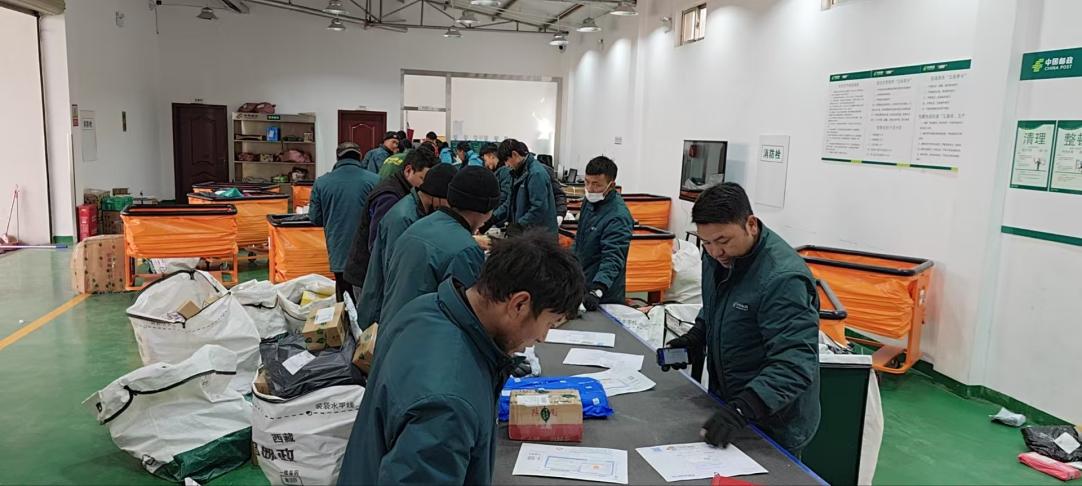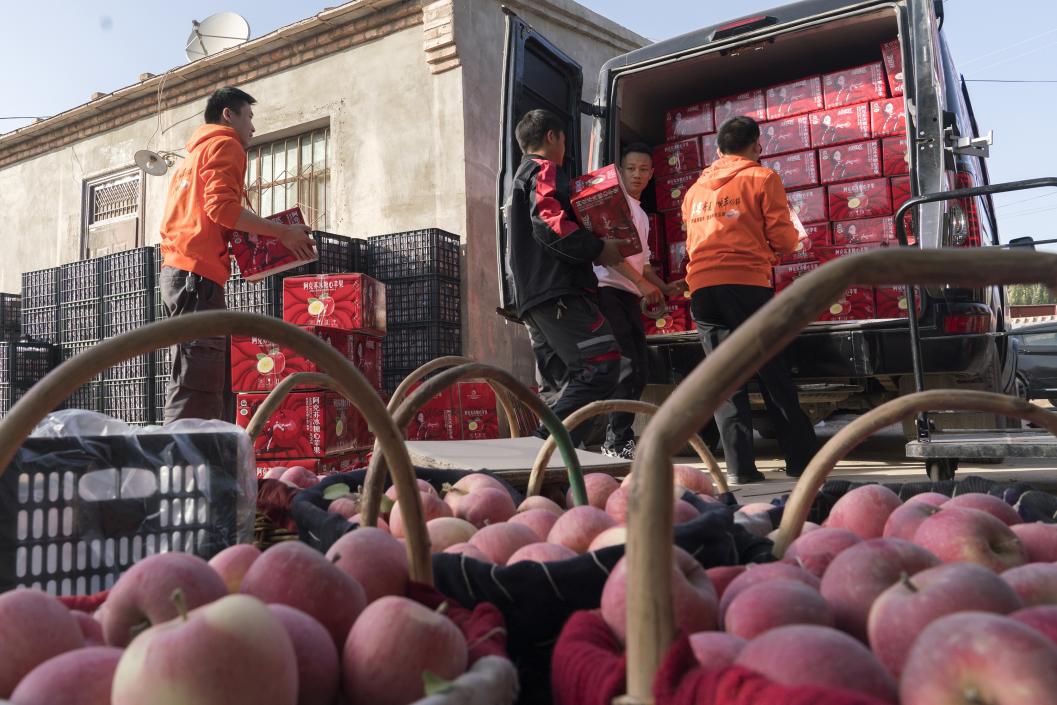E-commerce prospers in western regions of China, delivers benefits to locals
As the year drew to a close, Yan Lei's small courier station in Shigatse, southwest China's Xizang Autonomous Region, was filled with festive goods like Shanghai milk candies, Hainan coconuts, and Sichuan tangerines.
This seemingly ordinary scene was once unimaginable. Free shipping to remote areas was a distant dream in the past.
Reflecting on over two decades in the courier business, Yan, busy with end-of-year deliveries, is grateful for the new opportunities brought by the westward expansion of e-commerce platforms.

Staff members sort parcels at the distribution center of a delivery company in Lhasa, capital of southwest China's Xizang Autonomous Region. (Photo/Tenzin)
In 2010, Yan became a deliveryman. That year, there was only one delivery distribution center in Lhasa, capital city of the autonomous region. Every day, each of the 12 deliverymen handled just over 40 parcels in the city by motorcycle, while also sending out local specialty products.
Over the past 10 plus years, Xizang has made remarkable progress in infrastructure construction. However, due to high logistics costs and low population density, remote areas didn't enjoy free shipping services.
In 2022, the express delivery volume in Xizang was 12.19 million pieces. Although the logistics efficiency was greatly improved, the lack of free shipping services in remote areas remained a pain point in the industry.
In 2022, China's e-commerce platform Pinduoduo introduced a delivery model that waived delivery charges for users. In 2024, Pinduoduo announced plans to reduce or eliminate transfer charges for merchants shipping goods to remote areas such as Xizang and Gansu Province in northwest China.
In 2024, designated as the year of consumption promotion, the expansion of e-commerce into the western regions became a key strategy for tapping into consumer potential.

Staff members load boxes of apples onto a vehicle in a village in western China. (Photo/Liu Hao)
According to statistics from the State Post Bureau, from January to November 2024, the western regions made up 8.9 percent of China's total express delivery volume and 10.2 percent of total express delivery revenue. This marked an increase of 0.9 percent and 0.5 percent, respectively, compared to the same period in 2023.
Yan also took note of the government's push for innovation and entrepreneurship in the western regions. He is now thinking about assisting young people in rural areas in Shigatse to set up delivery stations and teach villagers to shop online in an effort to grow his own business.
"There are 17 counties in Shigatse. Currently, there are no express delivery services available to the villages apart from the postal service. I plan to engage young people from rural areas to set up delivery stations and teach the local villagers how to place orders online," said Yan.
He thinks that this strategy could potentially increase the volume of orders received by him by 20 percent each year and deliver more opportunities for villagers to make money in the future.
Photos
Related Stories
- Cambodian diplomat calls for future China-Cambodia cross-border e-commerce cooperation
- China's e-commerce logistics index hits 7-year high in November
- Expansion of global free shipping zone drives growth of cross-border e-commerce
- GAC announces optimization of regulatory measures for cross-border e-commerce exports
- Chinese authorities tackle algorithmic exploitation of delivery workers
- Feature: China's excavators, rollers dig long-haul success abroad via e-commerce
- Chinese man's English skills boost cross-border online sales
- China’s e-commerce giants report robust sales during 2024 'Double 11' shopping festival
- A glimpse of China's annual "Double 11" shopping festival
- Chinese provincial-level regions sign MoU on e-commerce cooperation in Guangxi
Copyright © 2025 People's Daily Online. All Rights Reserved.









